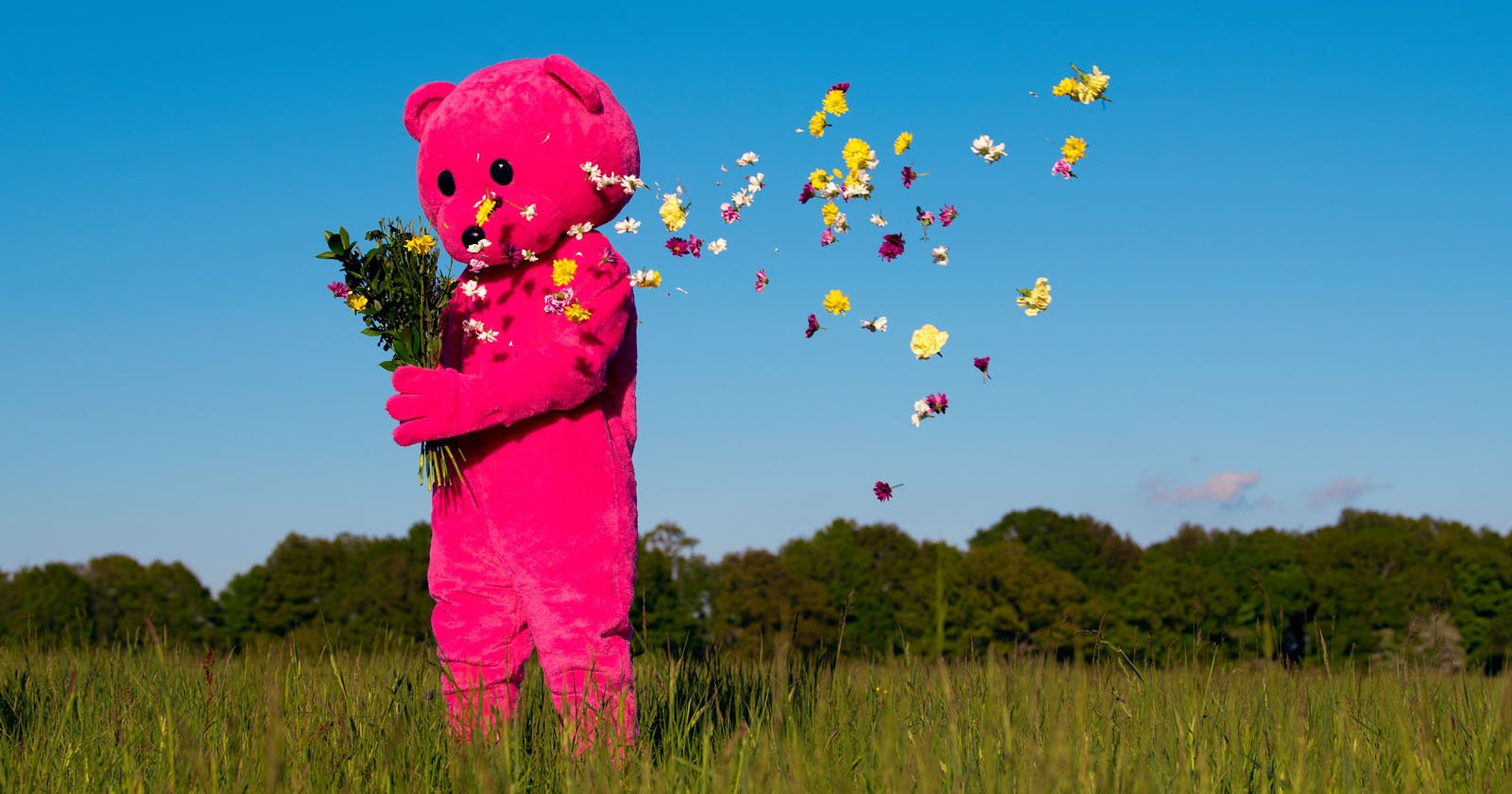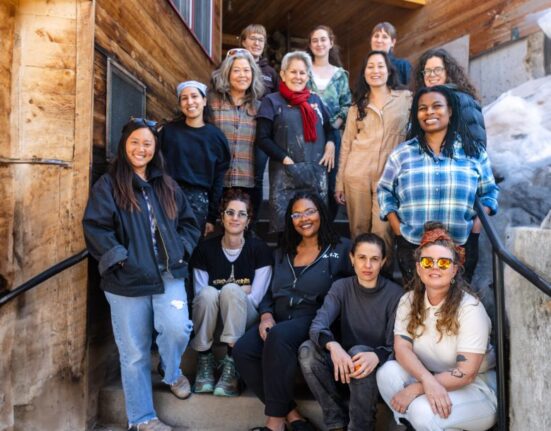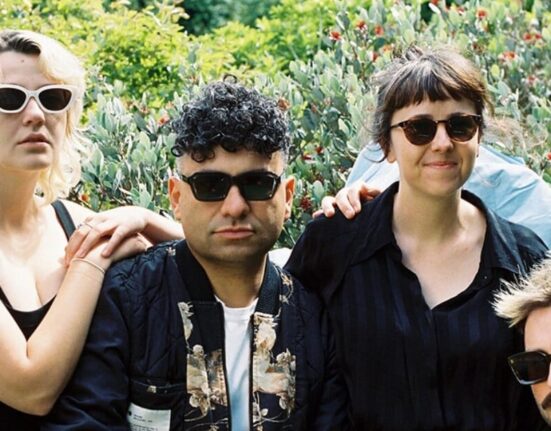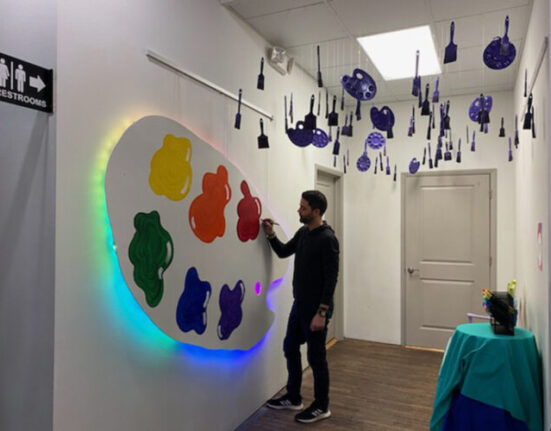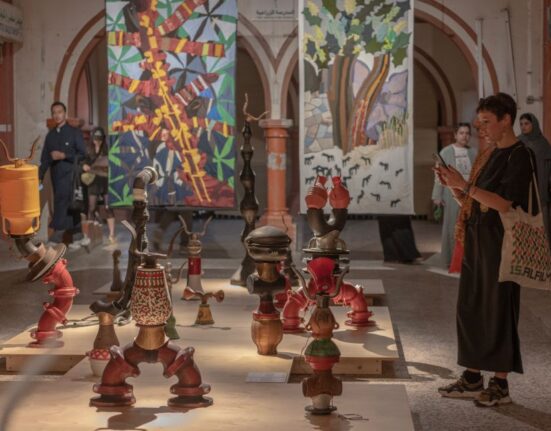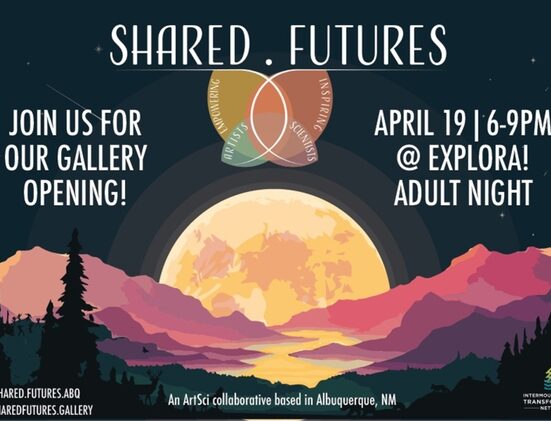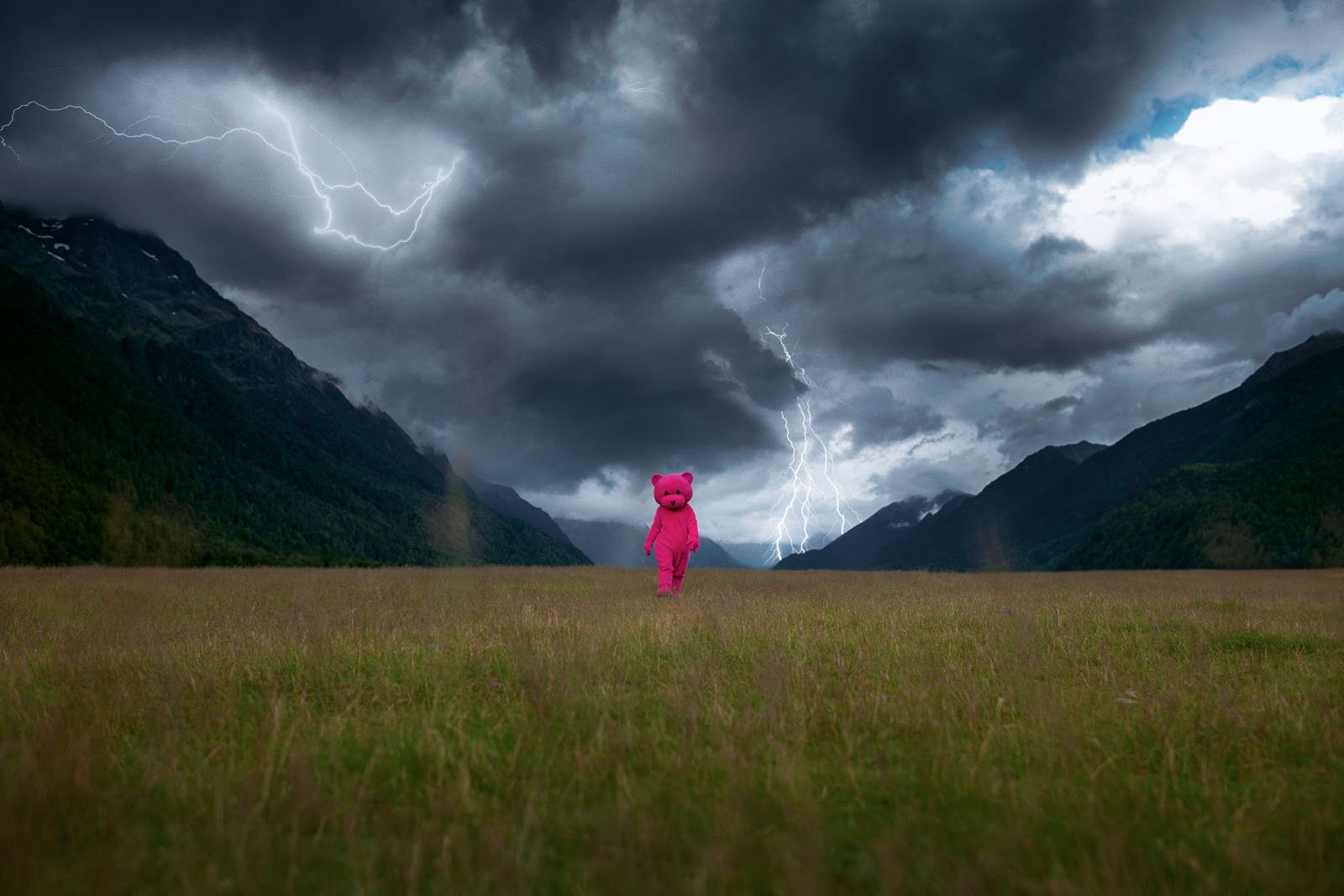
British multidisciplinary artist Paul Robinson, known professionally as LUAP, combines art across many mediums, including oil paintings, sculptures, and photography. Central to his artistic work is “The Pink Bear,” which is, as it sounds, a pink bear.
In reality, the large, bipedal pink bear, a person in a mascot’s attire, represents cherished pieces of Robinson’s childhood. “Resurrected through sessions of cognitive behavioral therapy (CBT). It is a figure which encapsulates the spectrum of human encounters. ‘The Pink Bear’ metamorphoses into a vessel for voyages of revelation and investigation. He embodies aspirations and anxieties. An enigmatic personality. He navigates between the surreal, the envisioned, and the corporeal,” LUAP explains on his website.
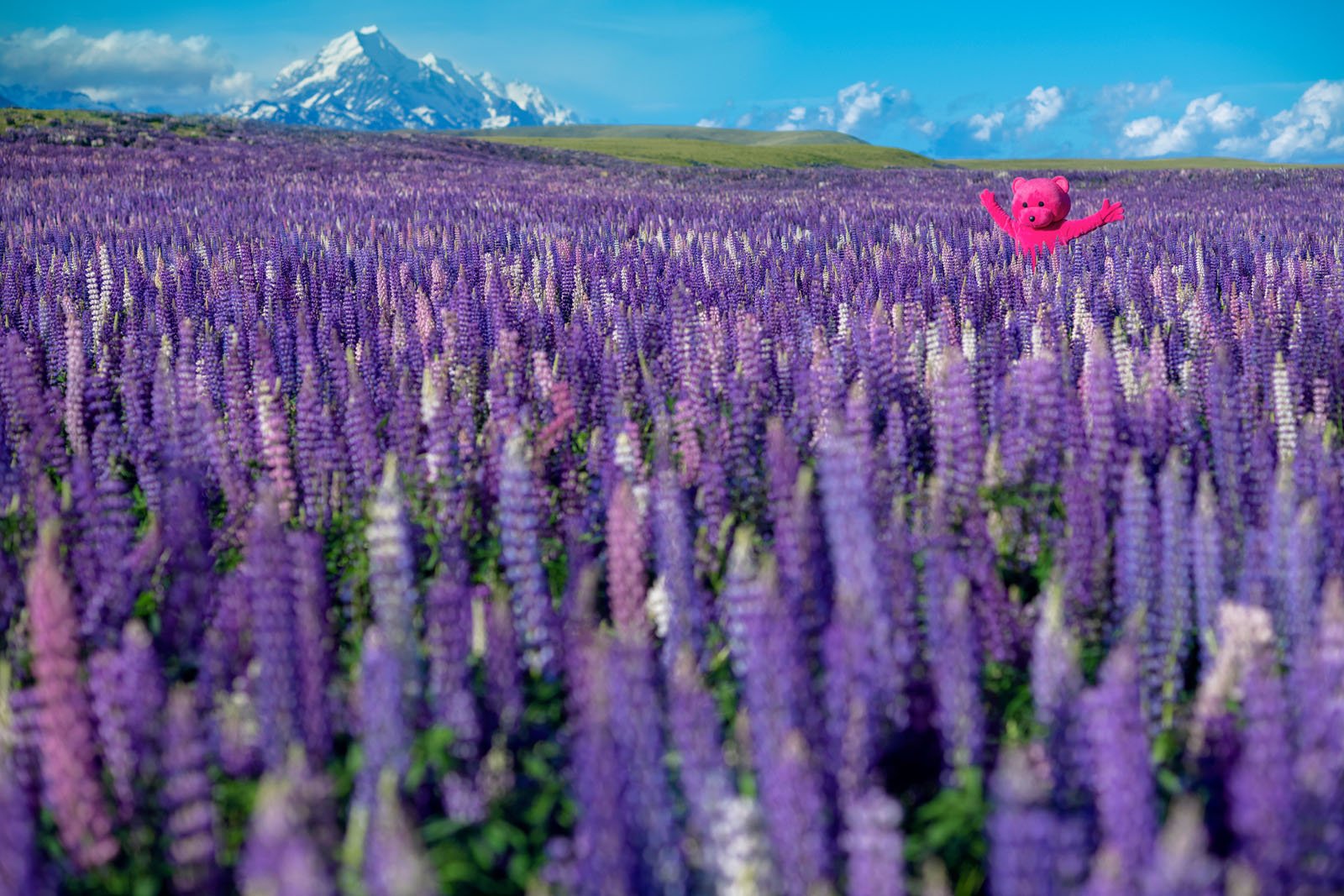
Although LUAP uses wide-ranging artistic tools to create his work, PetaPixel is most focused on the photographic parts of the process, and technology developments in cameras and lenses are something that LUAP has worked alongside throughout his career. Most recently, the Nikon Z8 has arrived, changing the artist’s workflow.
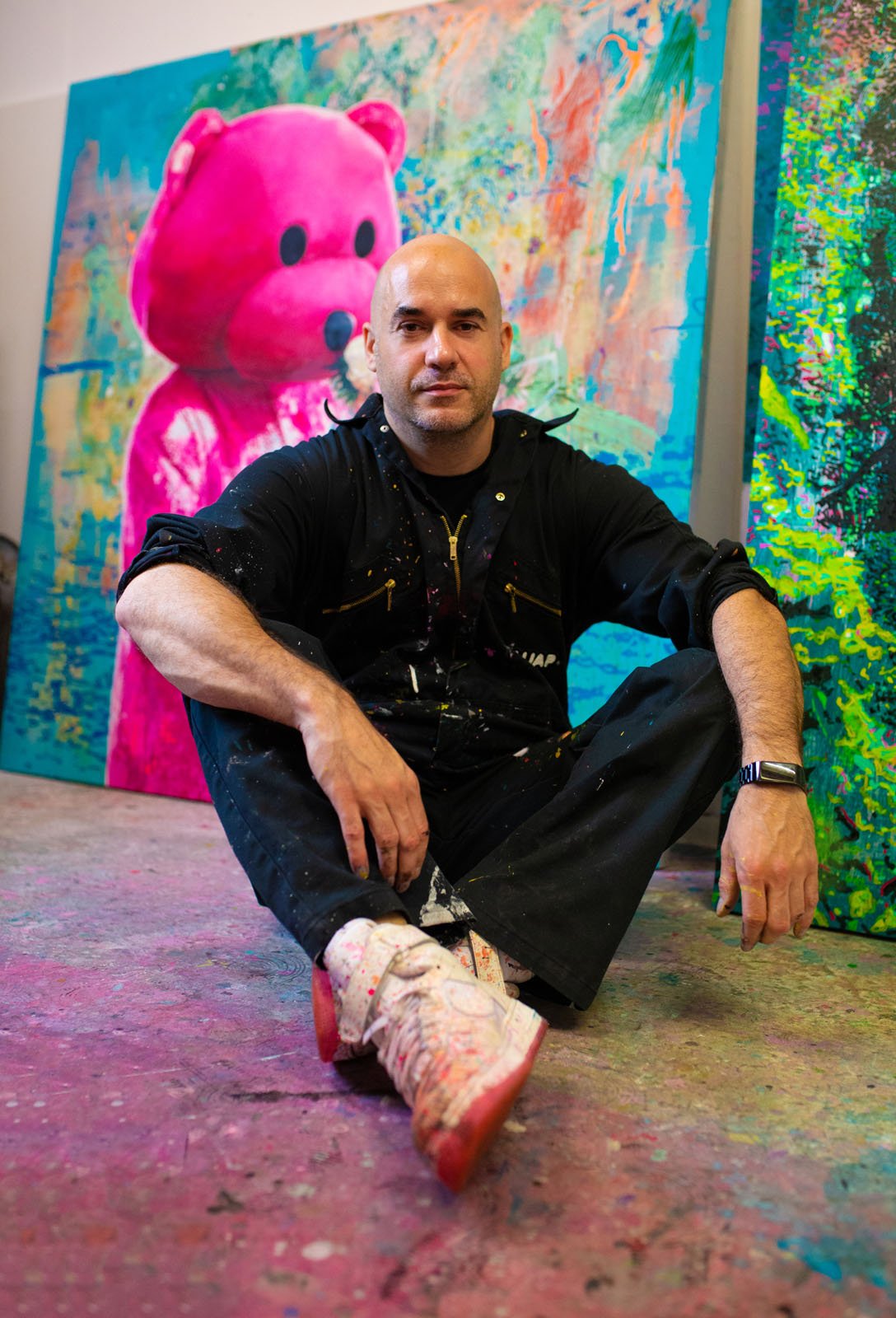
“Being a multidisciplinary artist, I’ve always found joy in experimenting with both established and emerging materials and technology, straddling the line between the past and the future. It’s an exhilarating space to occupy. Despite occasional reluctance, I’ve made a conscious effort to stay abreast of the latest technology, recognizing that these new tools not only spark creativity but also lead to exciting tangents of discovery. Yet, as an artist, I feel a deep-rooted need to preserve traditional methods of working as they are grounded in a rich history,” the artist explains to PetaPixel over email.
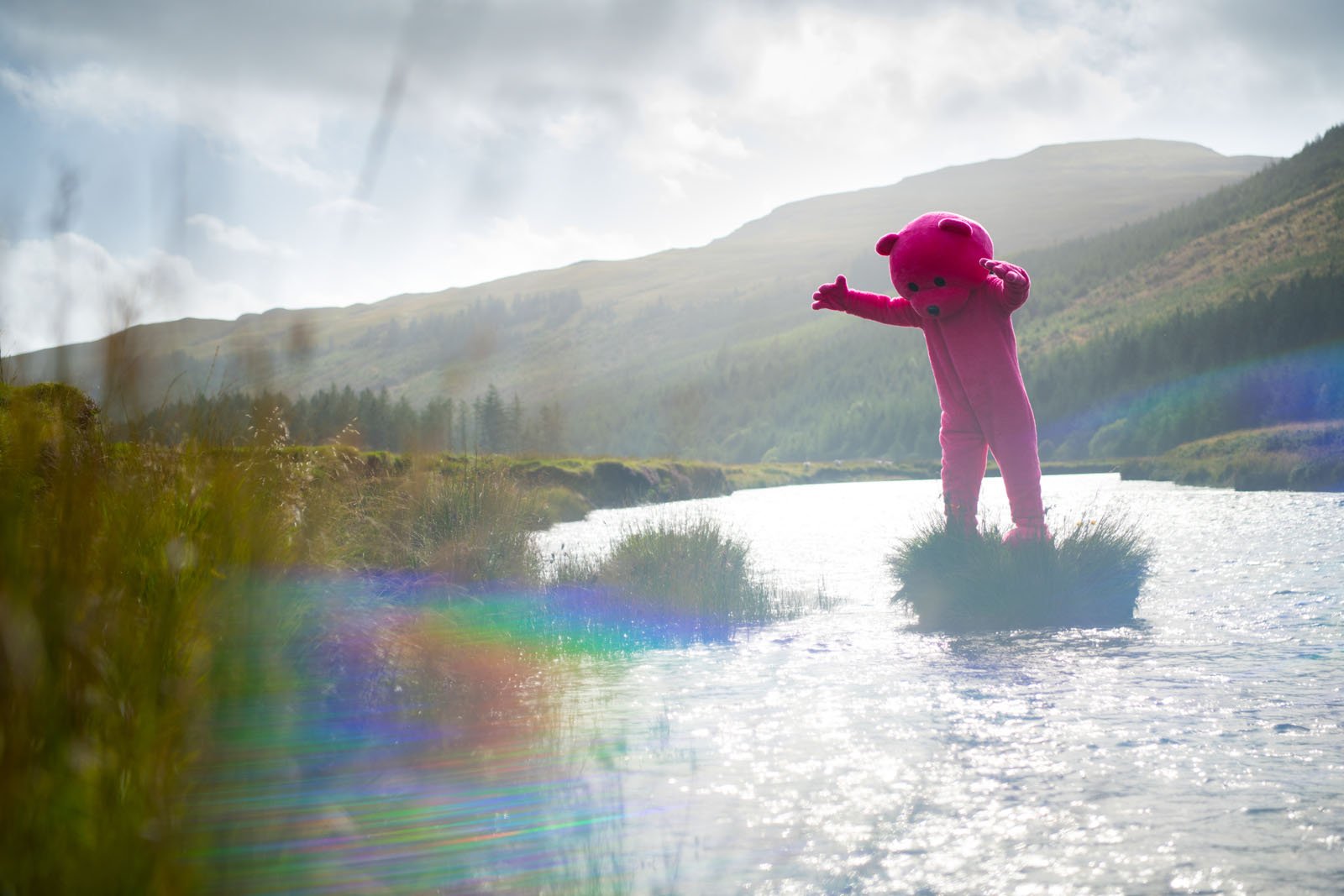
“When DSLR cameras made their debut, I had my reservations about leaving behind the charm of film. There was something magical about the grain in film — it felt tangible, almost like abstract brush strokes on the surface of a painting. The thrill of not knowing how the photos would turn out, especially after experimenting with long exposures or multiple exposures, added a genuine excitement to the process… However, this very magic of film, with its element of surprise, also had its downside. Occasionally, you’d end up with disappointing results, risking the loss of an entire shoot and you wouldn’t even know till you picked up the developed film from the lab or home darkroom.”

LUAP’s hesitation when transitioning from working primarily with analog photography to digital was echoed in the move from DSLR to mirrorless technology. It is often tricky for anyone, especially a working artist, to change their tools.
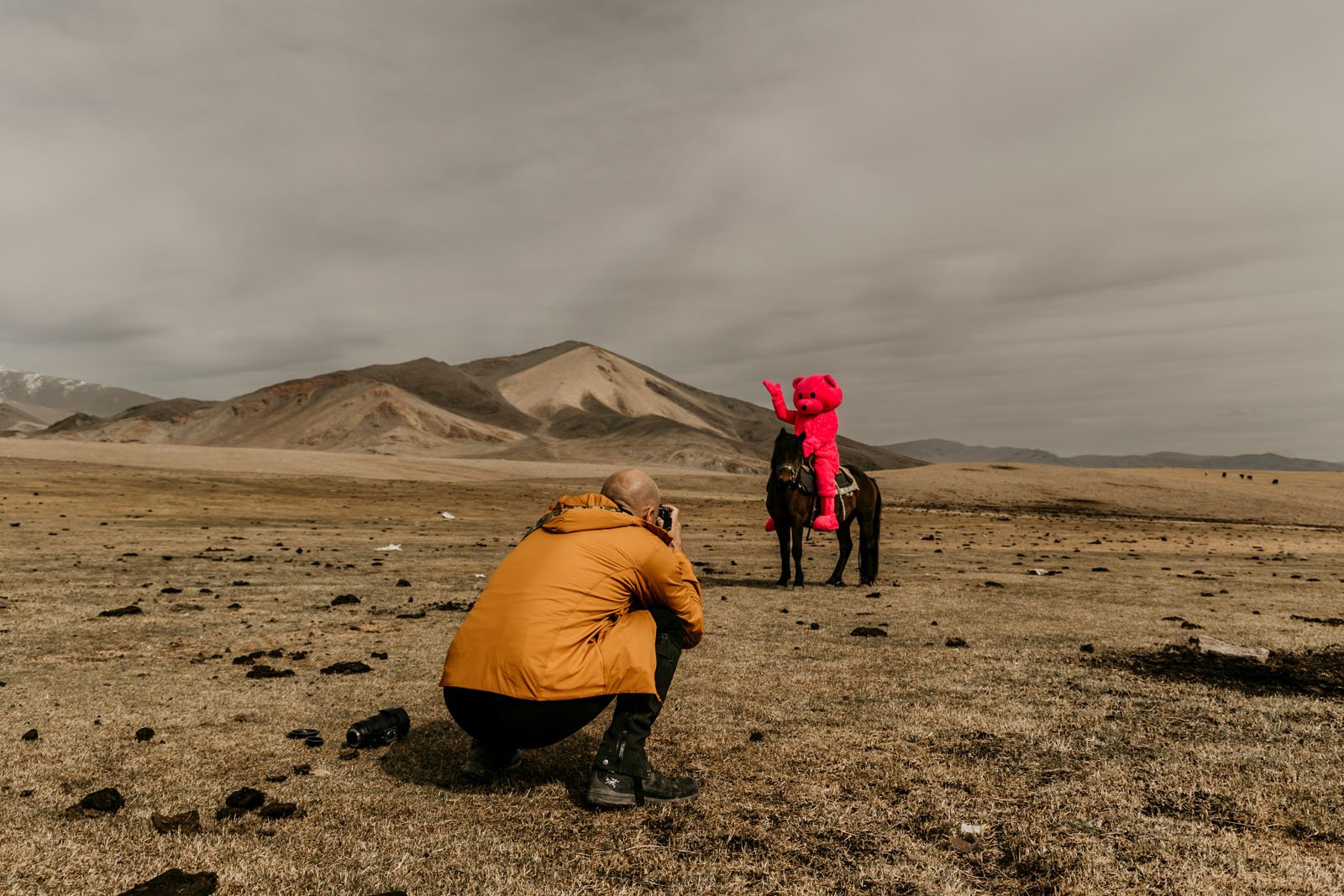
Despite considerable advancements in technology in Nikon’s latest mirrorless cameras, LUAP was worried that the leap from DSLR to mirrorless cameras like the Z8 and Z9 may prove even more dramatic than the one from film to early digital cameras.
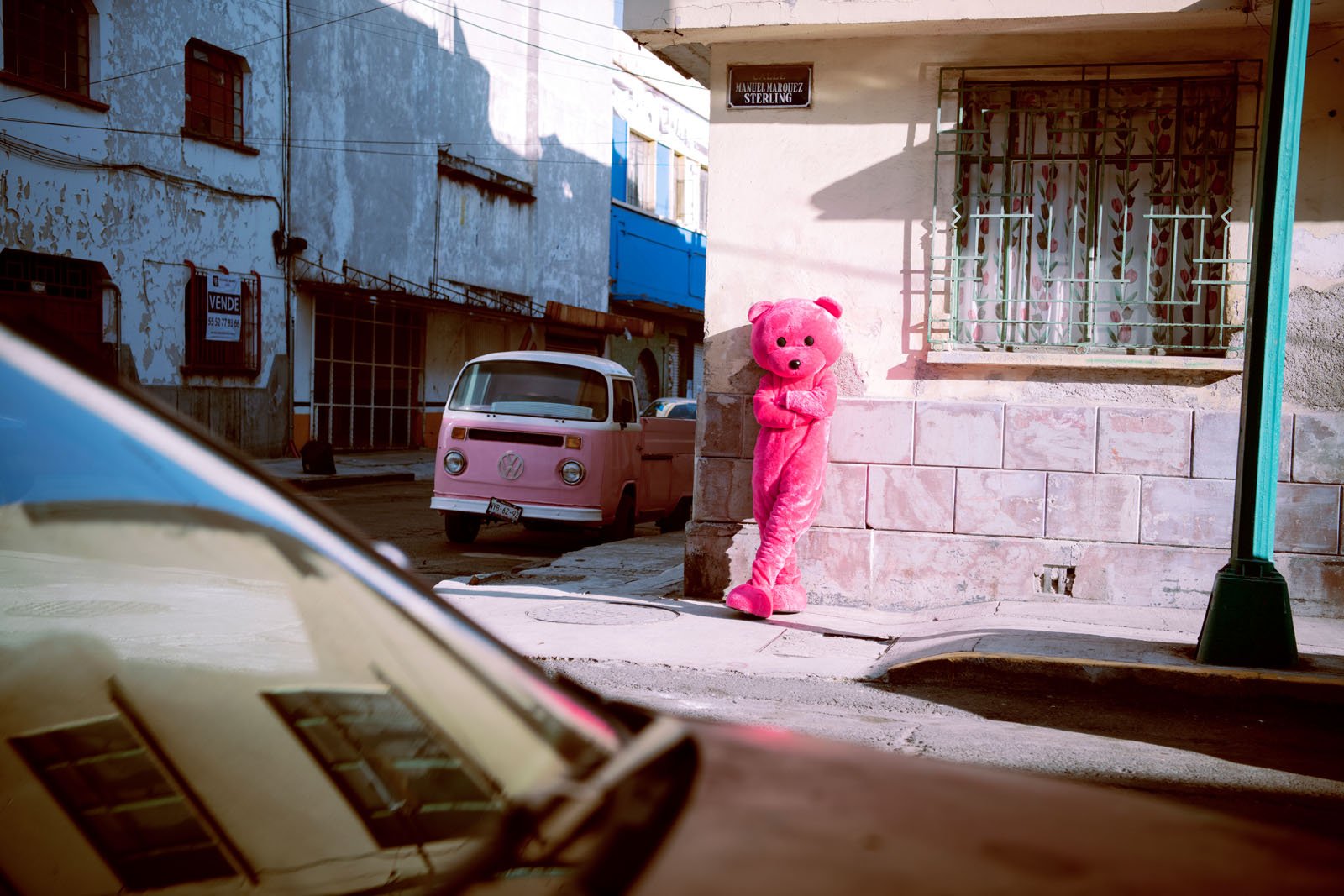
“Yet, when I finally got my hands on the Nikon Z8, it was a revelation!” the artist explains. “I had anticipated lag in the digital viewfinder, but to my surprise, there was none. Witnessing my photos in real-time, with the exposure and depth of field precisely as they would be saved to my memory card, was a game-changer. The video shooting capabilities are next level on the Z8, something I’d never really experienced on my previous cameras — so it was a welcome addition to my workflow — especially for social media.”
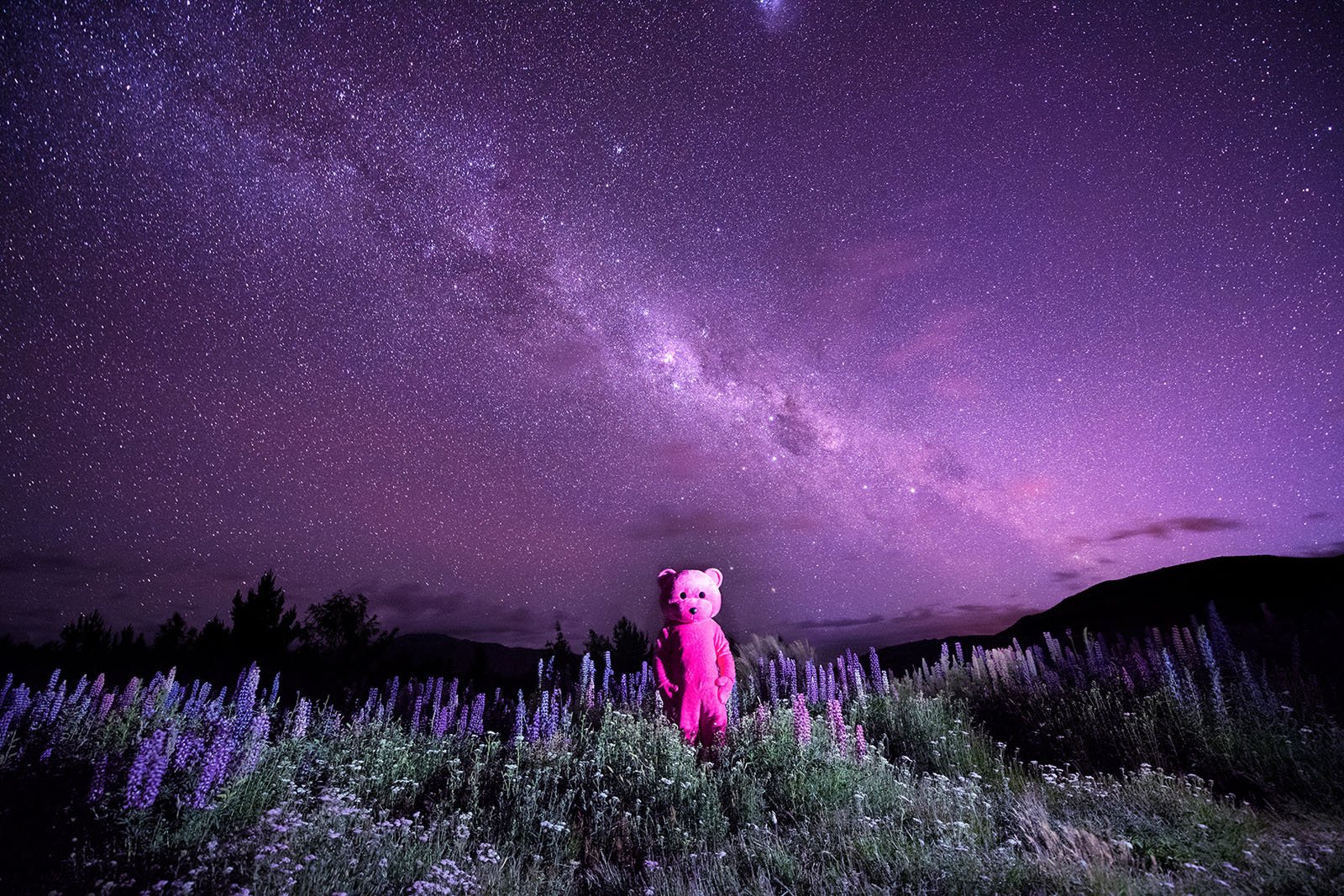
Combining Photography and Painting
LUAP’s work goes beyond photography, he also uses paintings, sculptures, and live performances to deliver a message. To that end, the artist aims for subtlety and invites the viewer to contemplate and reflect.

“Narrative, for me, is the essential thread that prevents the work from becoming mere decoration, and this perspective renders my process somewhat medium-agnostic,” LUAP explains.
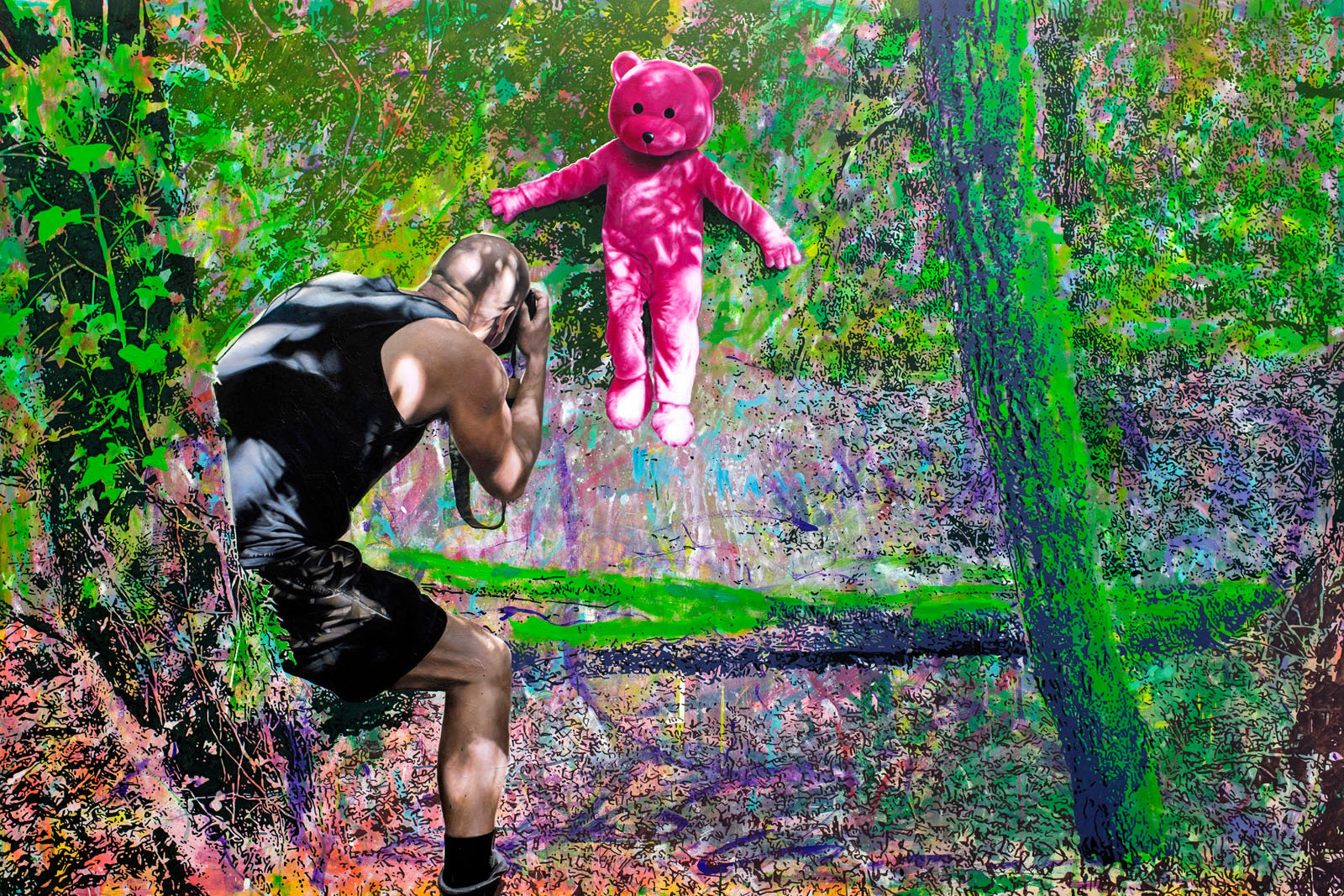
“I view technology as a mere tool for my creative process, treating my Nikon cameras as such. While I once preserved them meticulously, worrying about their pristine condition, I now embrace their use, even if it means a splash of paint, a smudge of dirt, or a few scratches on the camera body (a Nikon went under a wave in Australia and it still worked). They are tools meant to be utilized, not stored away for special occasions.”
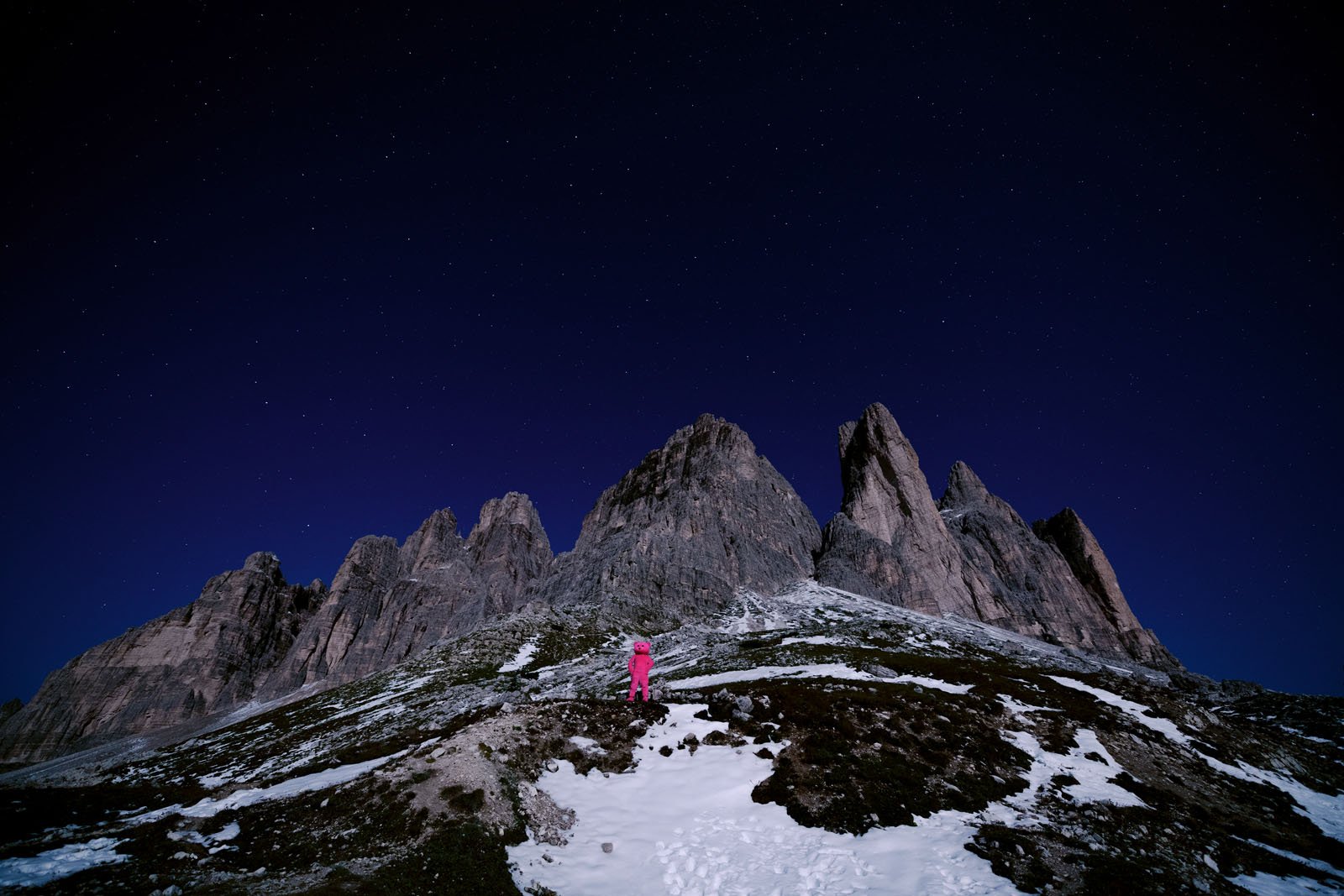
Whether painting, sculpting, or photographing, layers play an essential role for the artist. “Each image holds a distinct tapestry of narratives. While the lens captures the present, the layers encapsulate fragments of my personal history, creating a dance with nostalgia and humanity that echoes throughout my body of work. What makes this process even more personal is my commitment to authenticity; I refrain from digital alterations and instead go to extreme lengths to capture them, letting the photographs stand as unfiltered records of the moments etched into my life. It’s a journey through layers — a genuine, intricate exploration of my emotions and experiences translated onto canvas and pixels.”
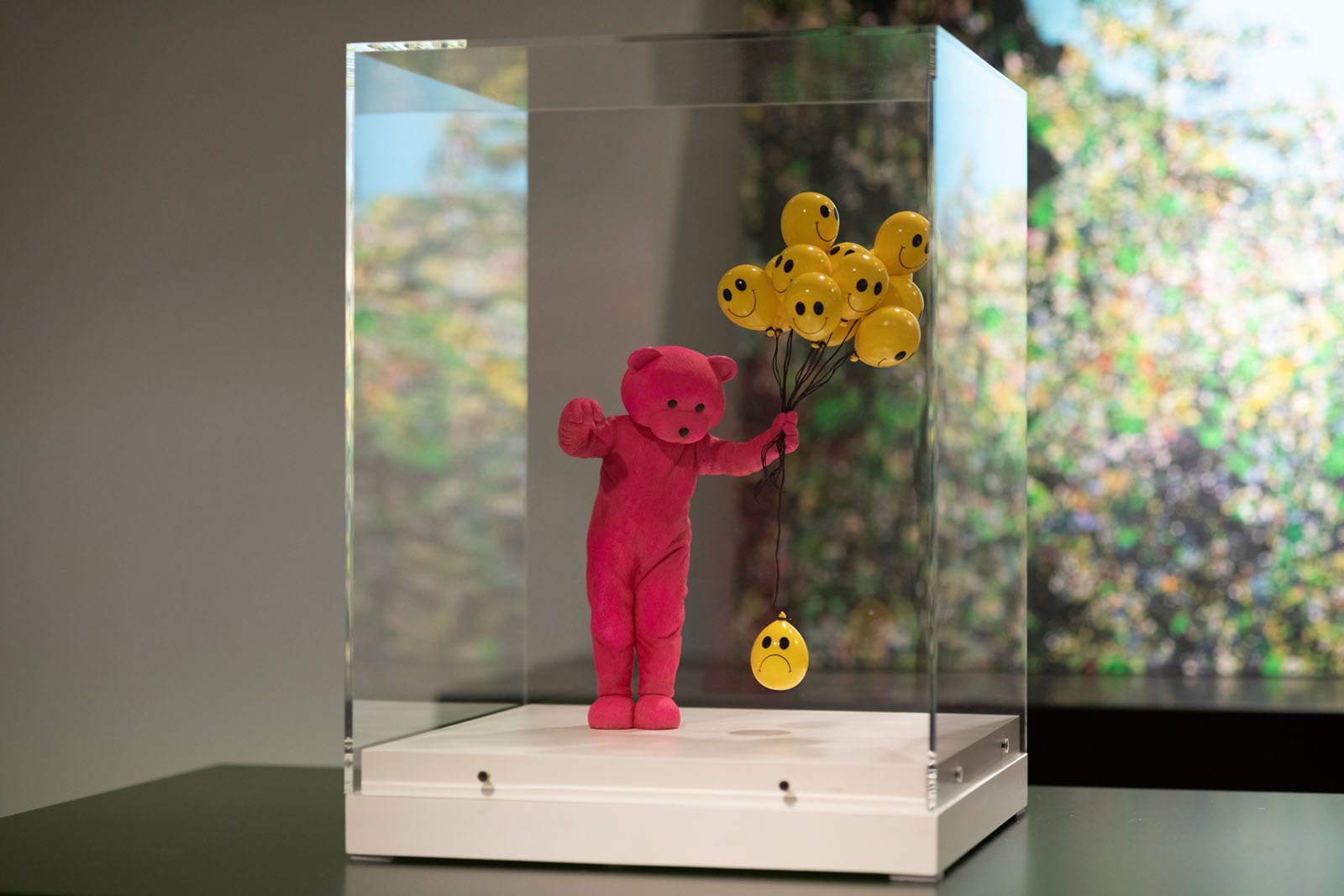
LUAP explains that photography is vital to their creative process, even when not using a camera. “My paintings are intricately connected to the photos I capture,” he asserts.
Photography influences LUAP’s overall work through traditional photographic aspect ratios. “I prefer adhering to photo formats, such as the classic 6 x 4 ratio or the square 1 x 1 reminiscent of old medium format sizes. These formats align well with compositional rules like thirds or the golden section, enhancing the visual harmony of the pieces.”
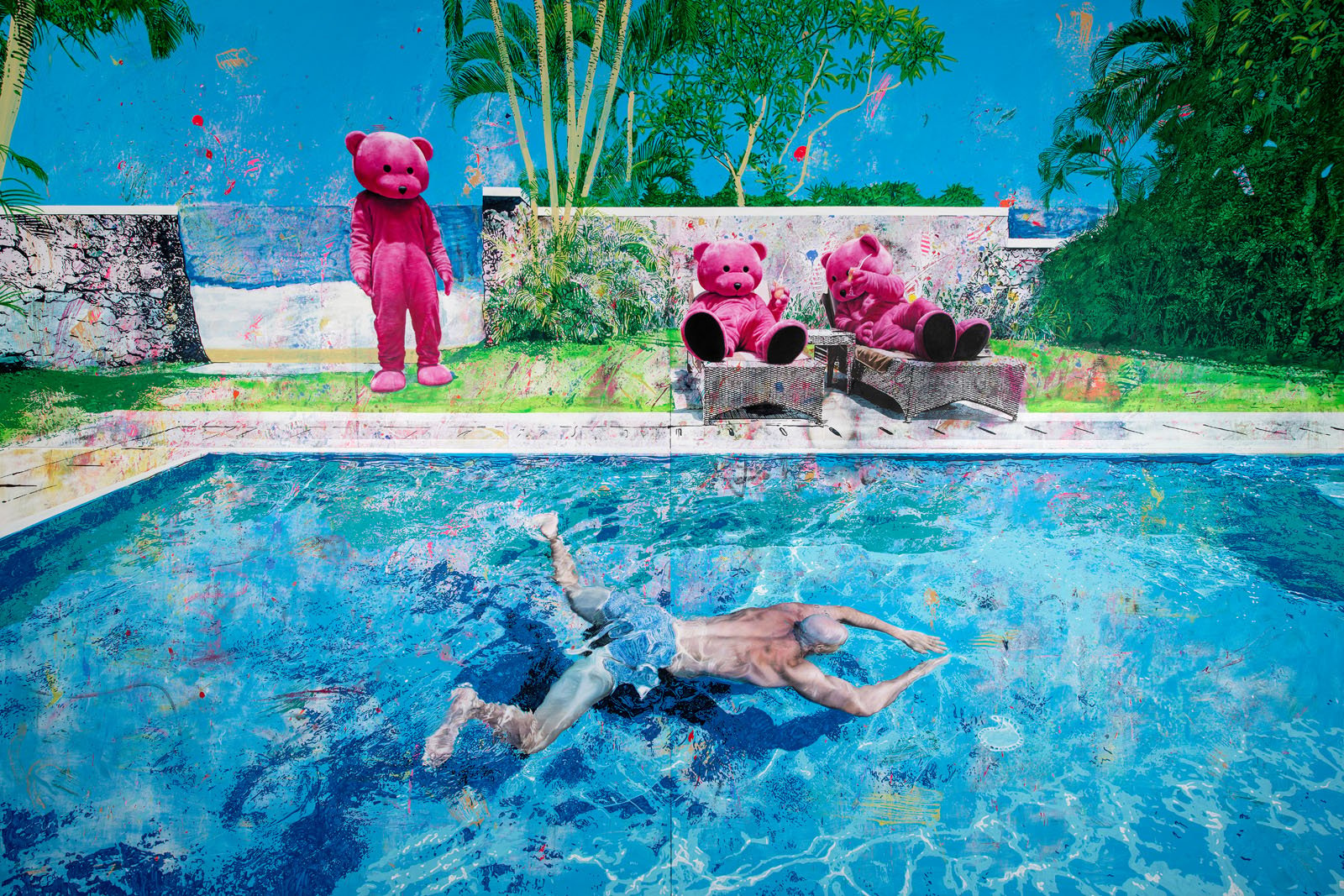
Although there is some overlap between photography and painting, including through a shared focus on colors, textures, and light, LUAP says that when creating a painting, there is a unique concern about how the physical paint strokes on canvas emphasize a particular emotion. A painting has a “tactile” quality that a photograph lacks.
The Pink Bear
LUAP explains that The Pink Bear “emerged from the recesses of my childhood memories, surfacing during my exploration of cognitive behavioral therapy.”
At first, the bear was something of an “alter ego, a protective second skin worn to events, a mask concealing my true self beneath a veneer of a happy memory,” the artist explains.
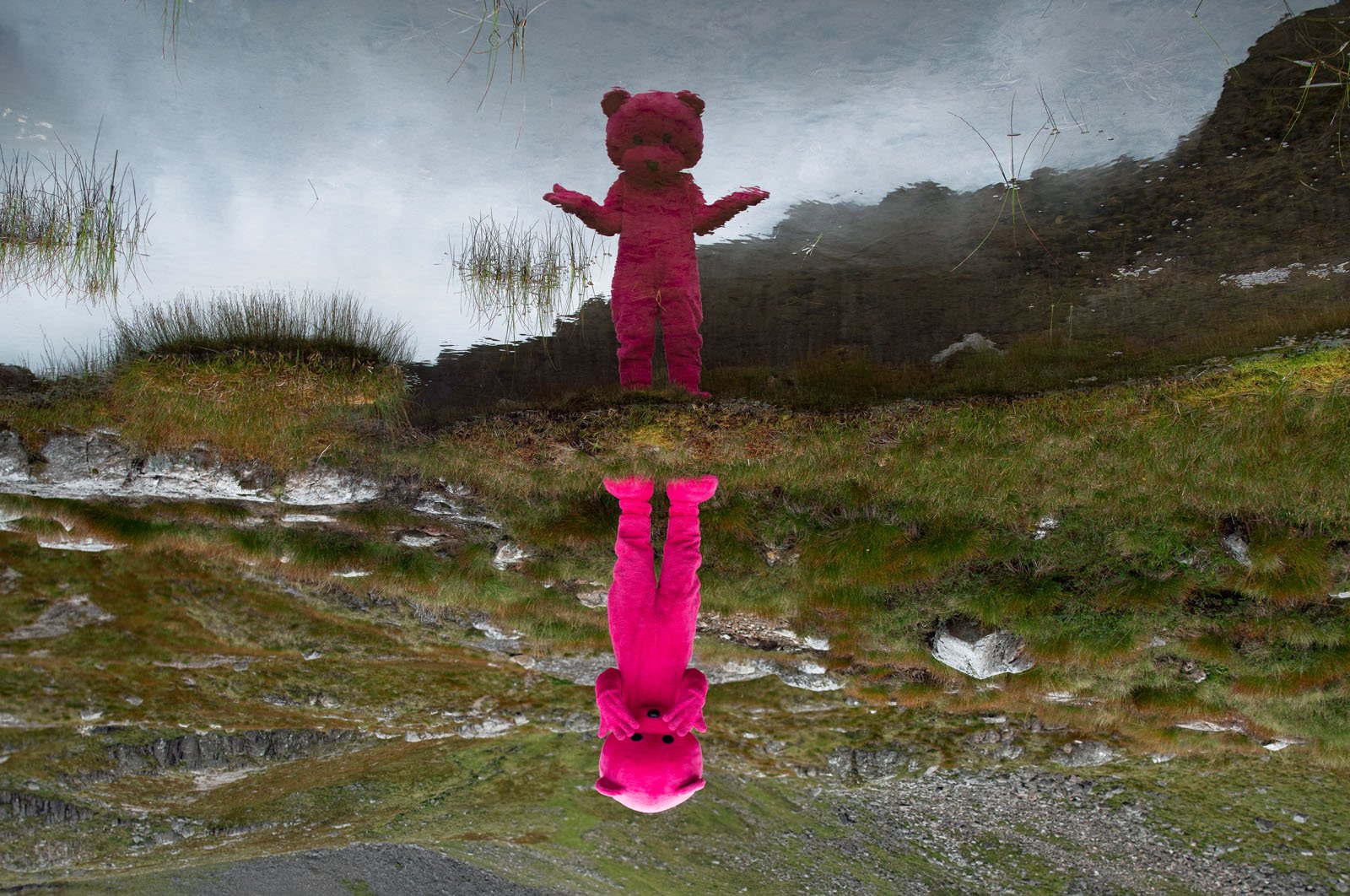
Over time, The Pink Bear evolved into more of a symbol of the transformative process of healing and stands as more of a positive beacon.
“In the company of The Pink Bear, the contrasting landscapes become a canvas for storytelling –mountains, surreal realms, bustling cities, and remote corners of the world provide the stage. As my constant companion, The Pink Bear transcends the confines of youthful innocence, stepping into a delicate space between reality and make-believe,” says LUAP.
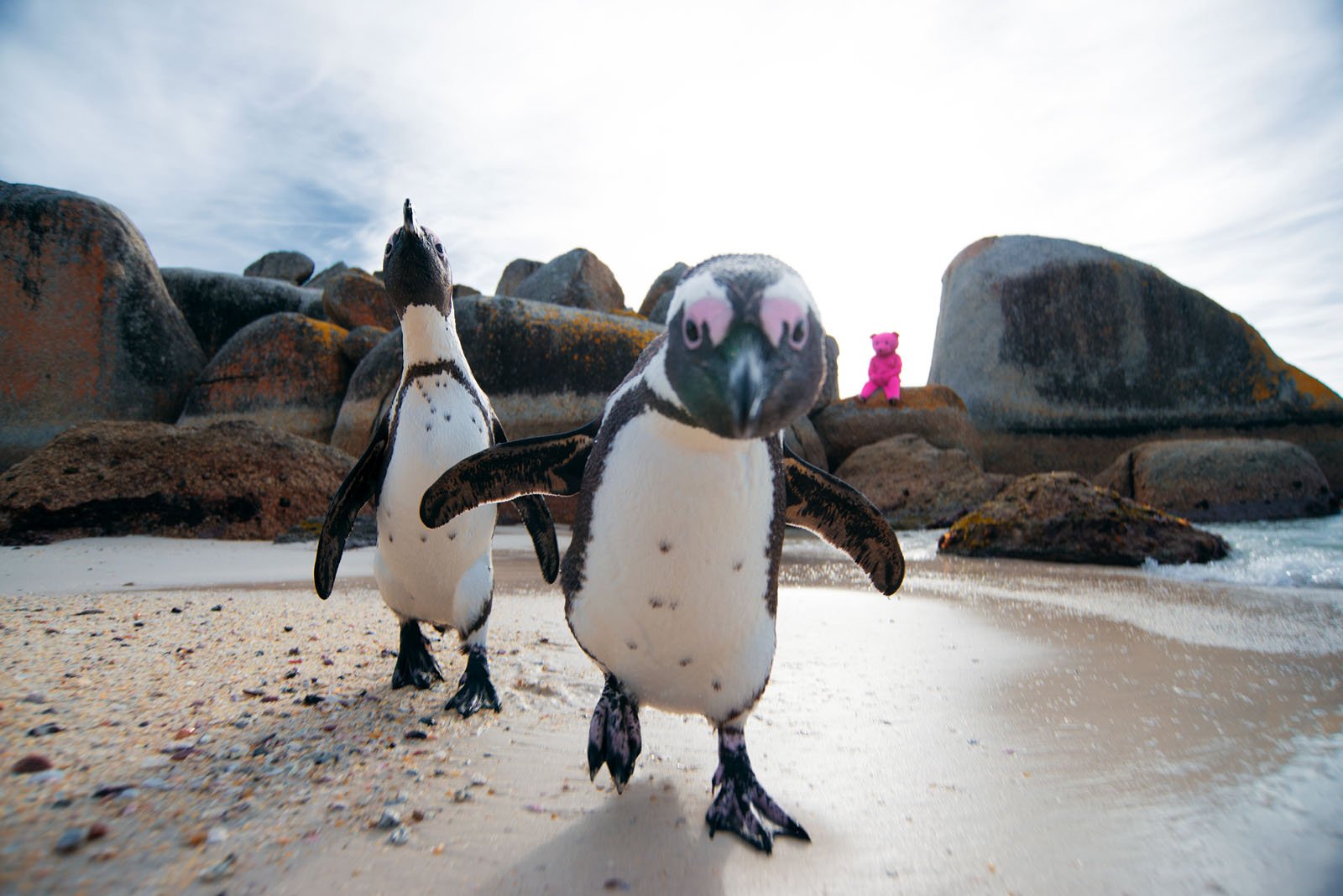
While his work reflects his journey, LUAP also wants The Pink Bear to provide a canvas for viewers to interact with the artwork. The bear’s blank expression is no accident; it is designed to make it easier for others to find meaning when contemplating LUAP’s work.
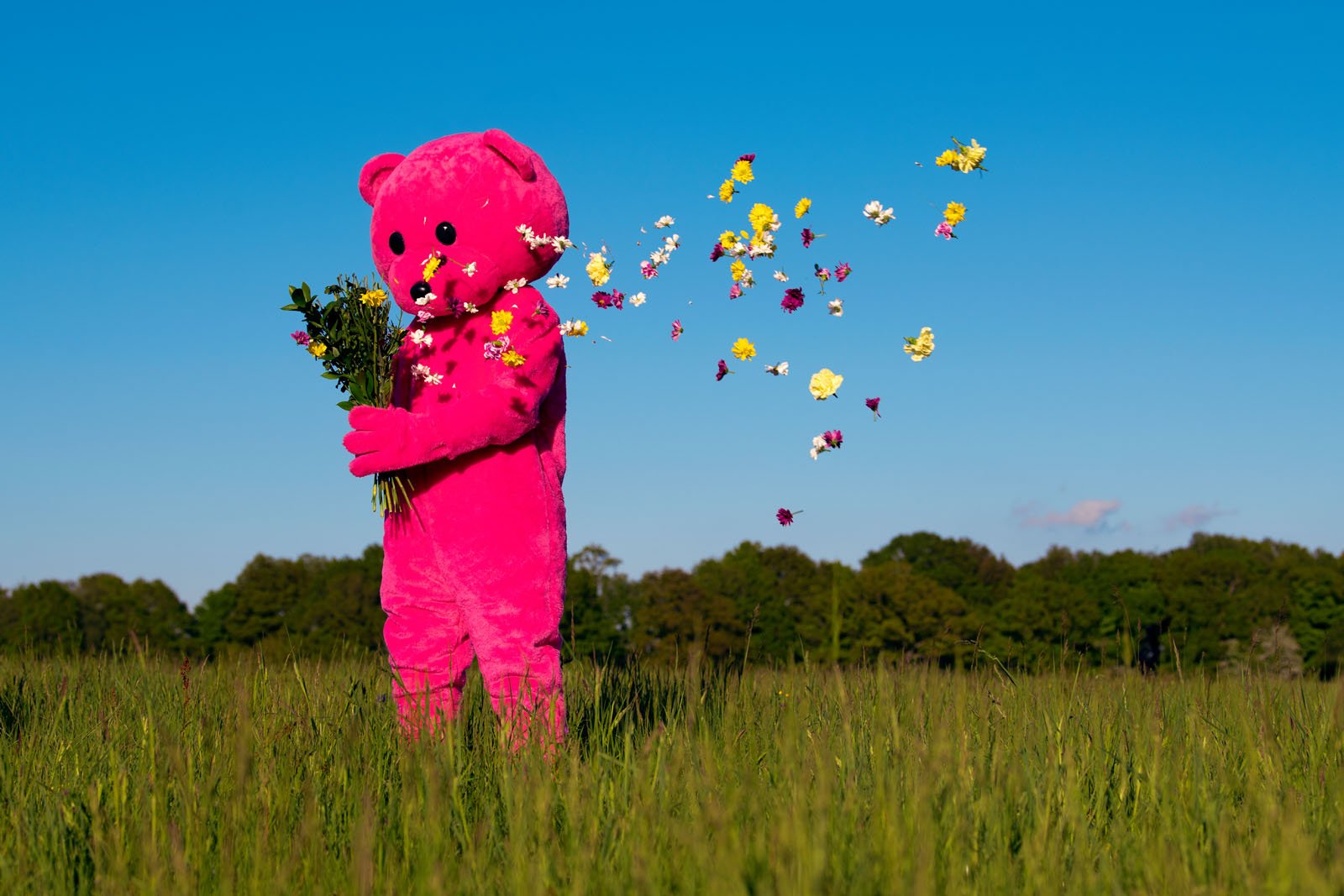
“By avoiding a predefined smile or frown, the bear becomes a visual mirror, reflecting the observer’s feelings. In psychology, it’s called projection. Collectors have shared that the same piece of artwork can evoke different emotions at various times of the day, emphasizing the dynamic and interactive nature of the work.”
“When my goal is to convey a powerful emotion, I leverage body language and carefully selected props with symbolic significance. These elements work together to articulate the intended narrative of the image.”
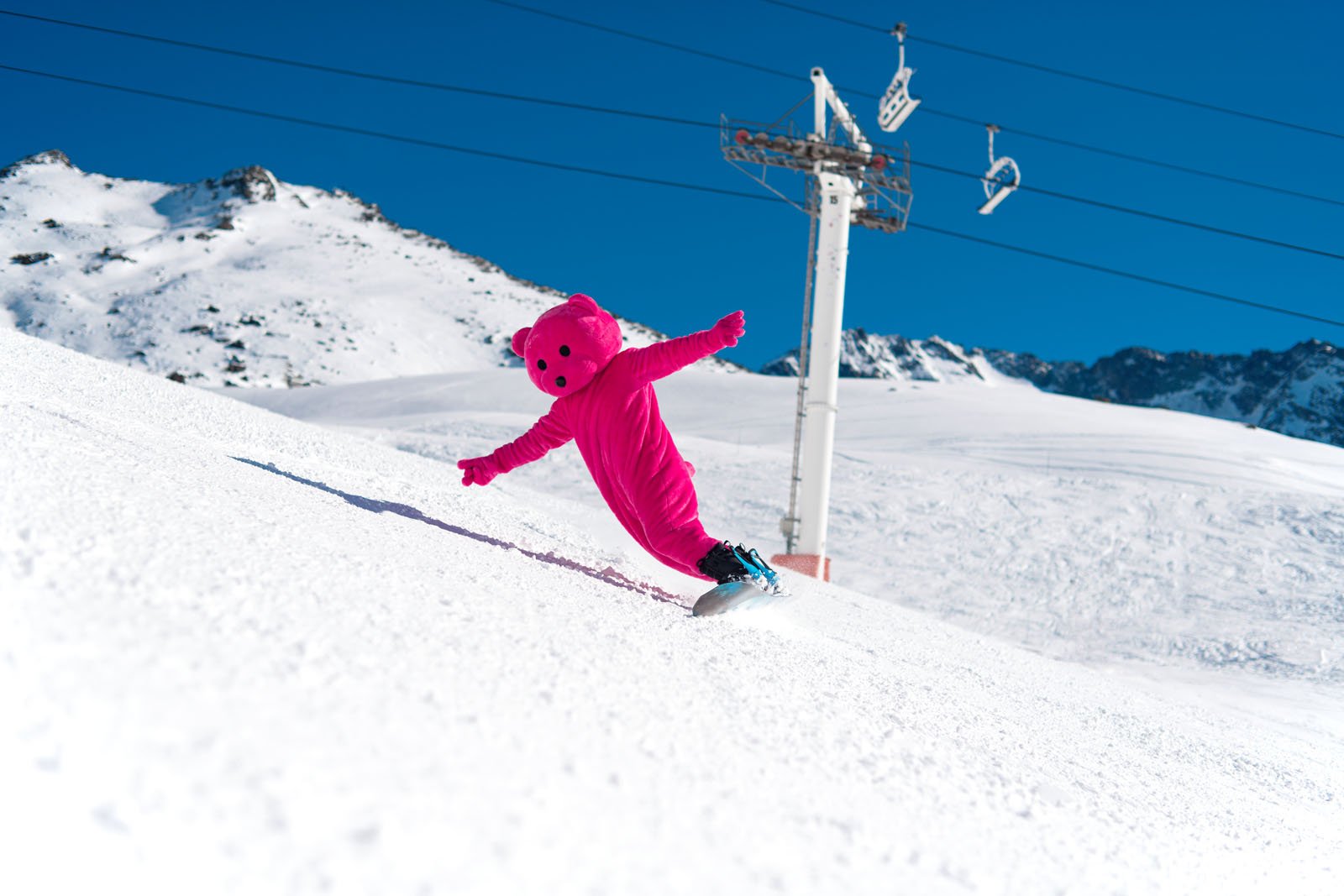
As for why the bear is pink, of all the possible colors, LUAP says that the color was chosen to avoid potential negative connotations.
“For example, if it was red, it could be seen as angry, or if it were blue, it would look melancholic, or brown, it would be too close to a real bear or maybe be too hidden. Unlike other colors that might carry emotional weight, pink stood out as a beacon of positivity. Its vibrant and cheerful nature reflected a desire to break free from the shadows where I once felt hidden.”
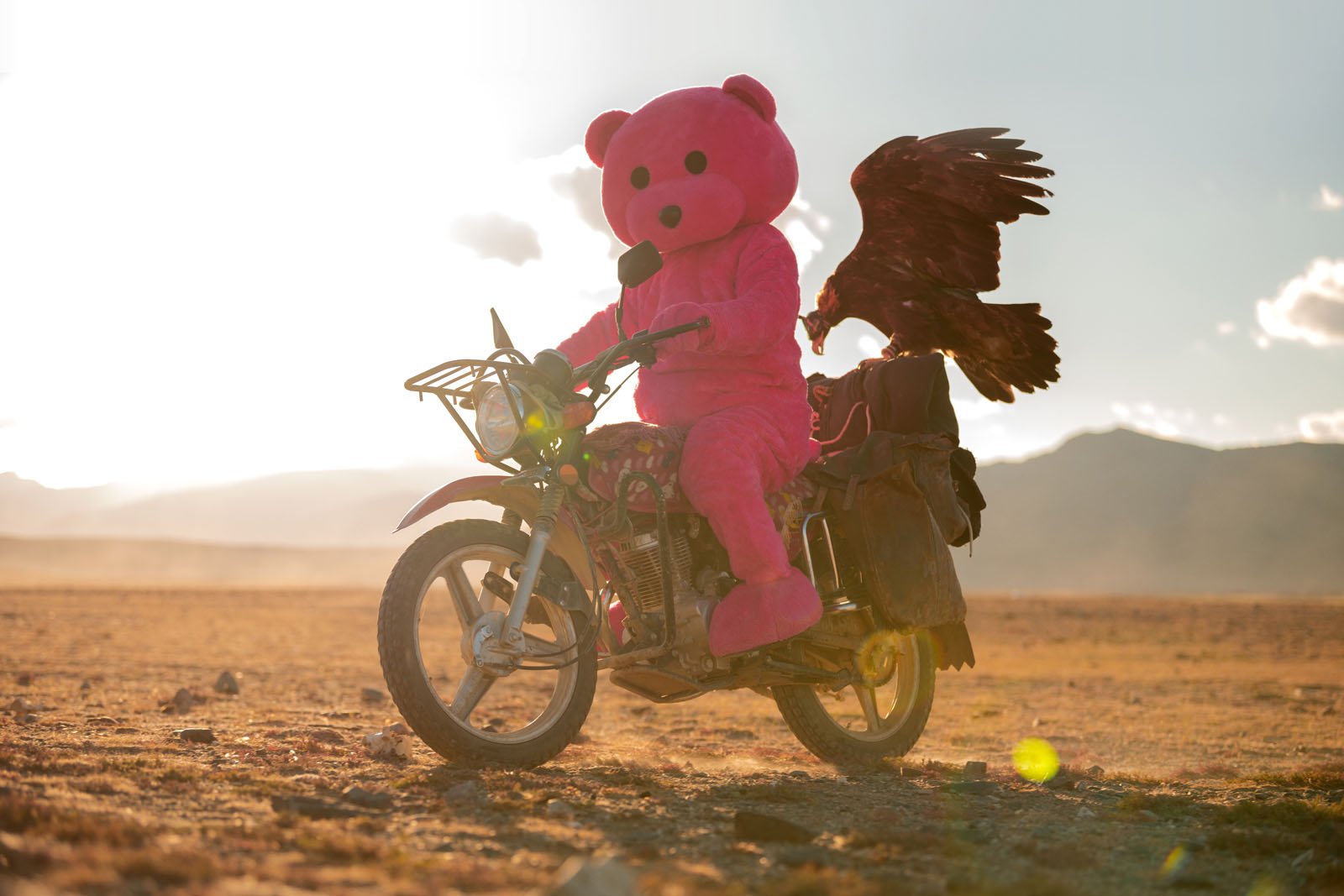
“The dynamic nature of the color, its ability to shift tones and saturations with changing light, brought a lively and adaptive quality to the bear. While its inherent hue was pink, the adaptability allowed it to take on various tones, echoing the shifting moods and atmospheres of different scenes,” LUAP says. “This adaptability, I realized, wasn’t just a visual trait but a storytelling tool. The bear, with its ever-changing color nuances, became a dynamic element in the narrative, responding to the emotional tenor of each moment captured through the lens.”
Social Media is Personal But Limiting
Like other visual artists, LUAP has utilized social media as part of his work.
“Galleries, with their white walls and curated environments, offer a designated space for art consumption — encouraging a critical and meaningful engagement with the work. The controlled setting allows viewers to absorb the art’s depth,” LUAP says. “On the other hand, social media presents a different dynamic, showcasing work in the continuous flow of a varied feed. While lacking a controlled context, social media has the unique advantage of infiltrating individuals’ private spaces, making an impact on a more personal level.”
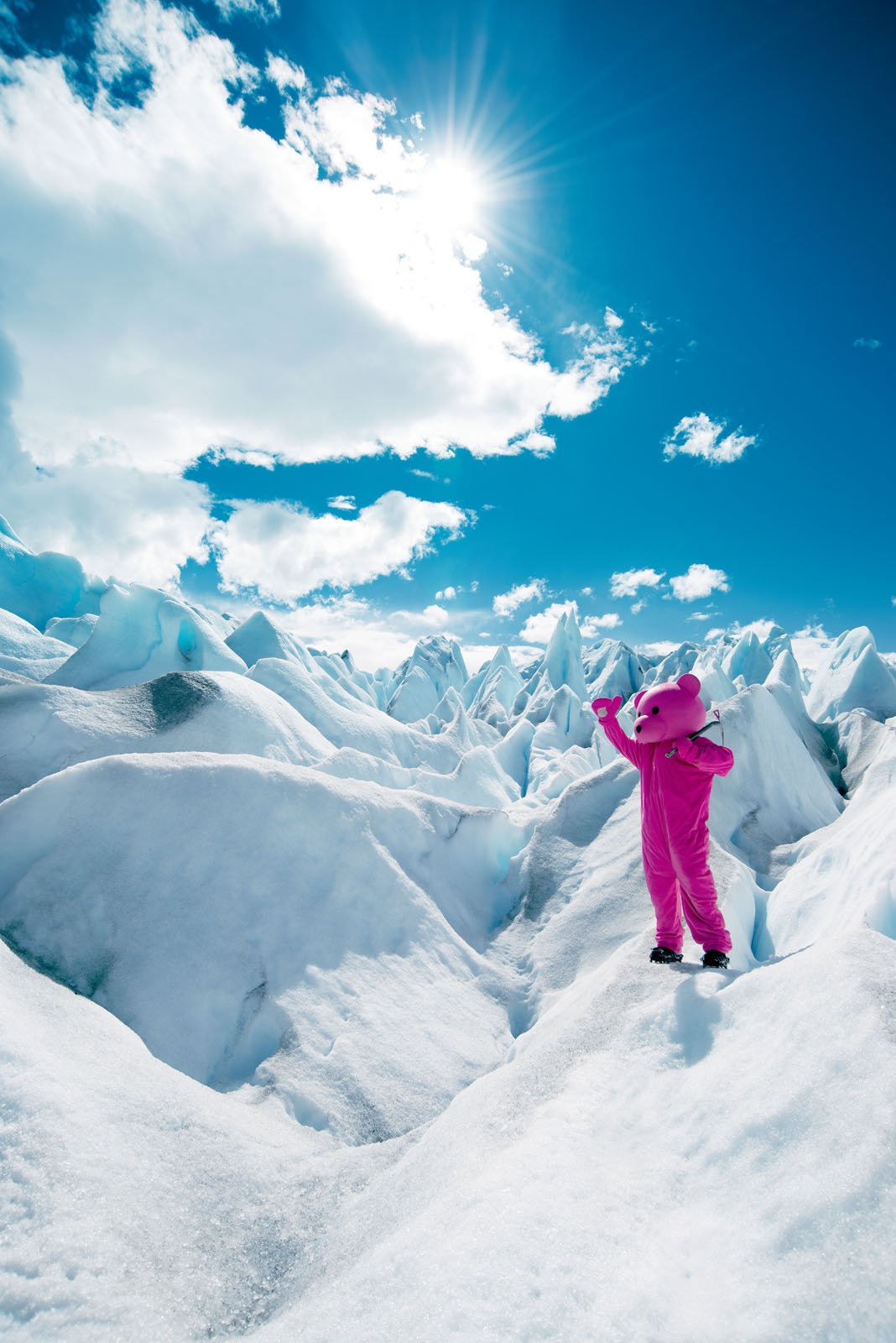
However, LUAP finds sharing work on social media “a bit limiting.”
“I’ve observed a noticeable shift in how artists approach their work, seemingly prioritizing the broad strokes for online impact, particularly on platforms like Instagram. However, I maintain a more traditionalist view. While acknowledging the importance of a strong online presence, I place significant value on how the work translates in real life, with meticulous attention to detail being a key aspect. It’s not just about looking good on a screen but ensuring the work truly captivates when experienced firsthand, allowing every nuance to shine.”
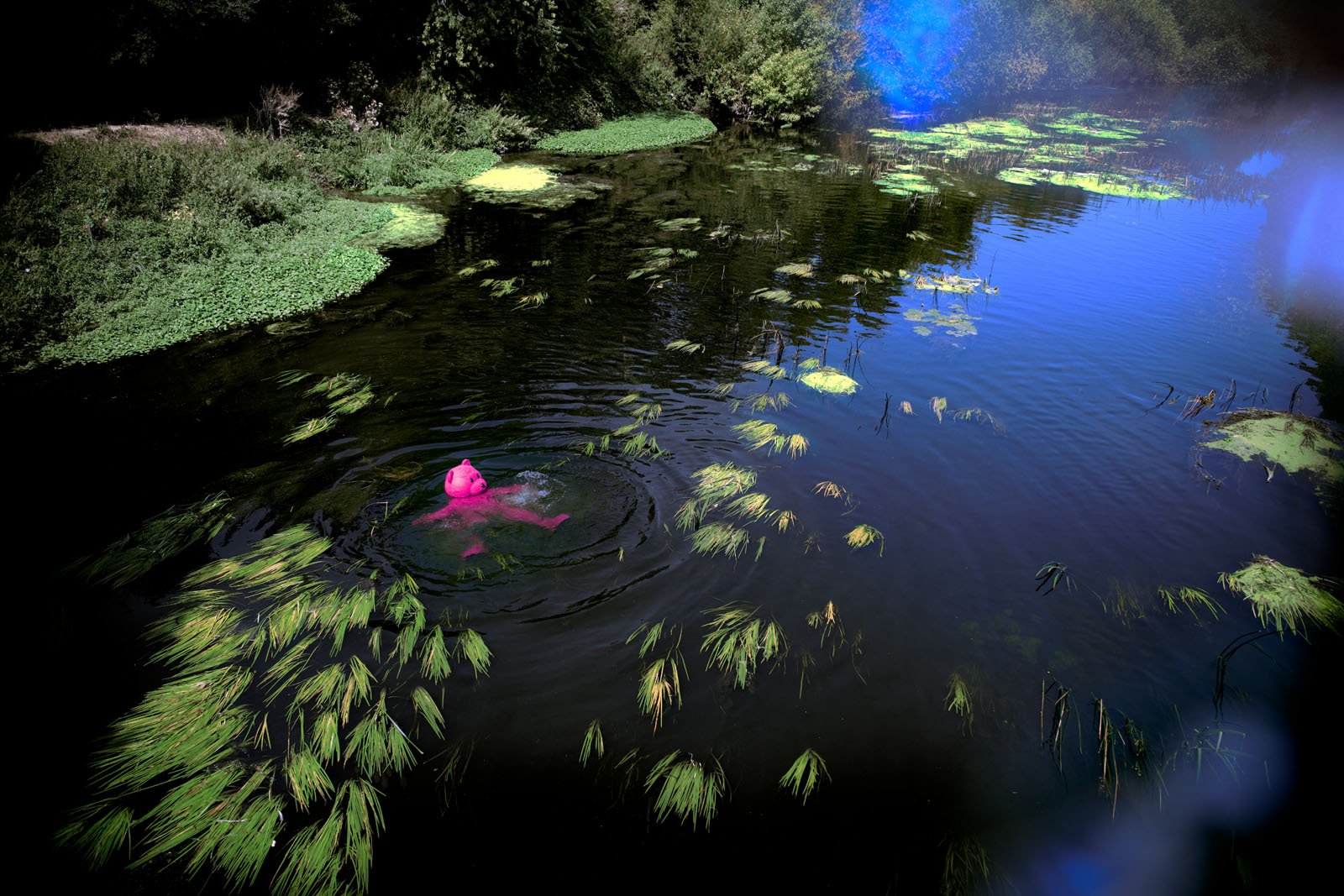
The Healing Power of Photography
“Art has been an invaluable tool for processing my emotions,” LUAP explains. “This creative journey has taken me across the globe, seeking new ideas and landscapes to incorporate into my work. Even if the photos captured during these explorations don’t immediately make sense to me, they serve as inspiration waiting for the right moment to align with a particular train of thought and resurface.”
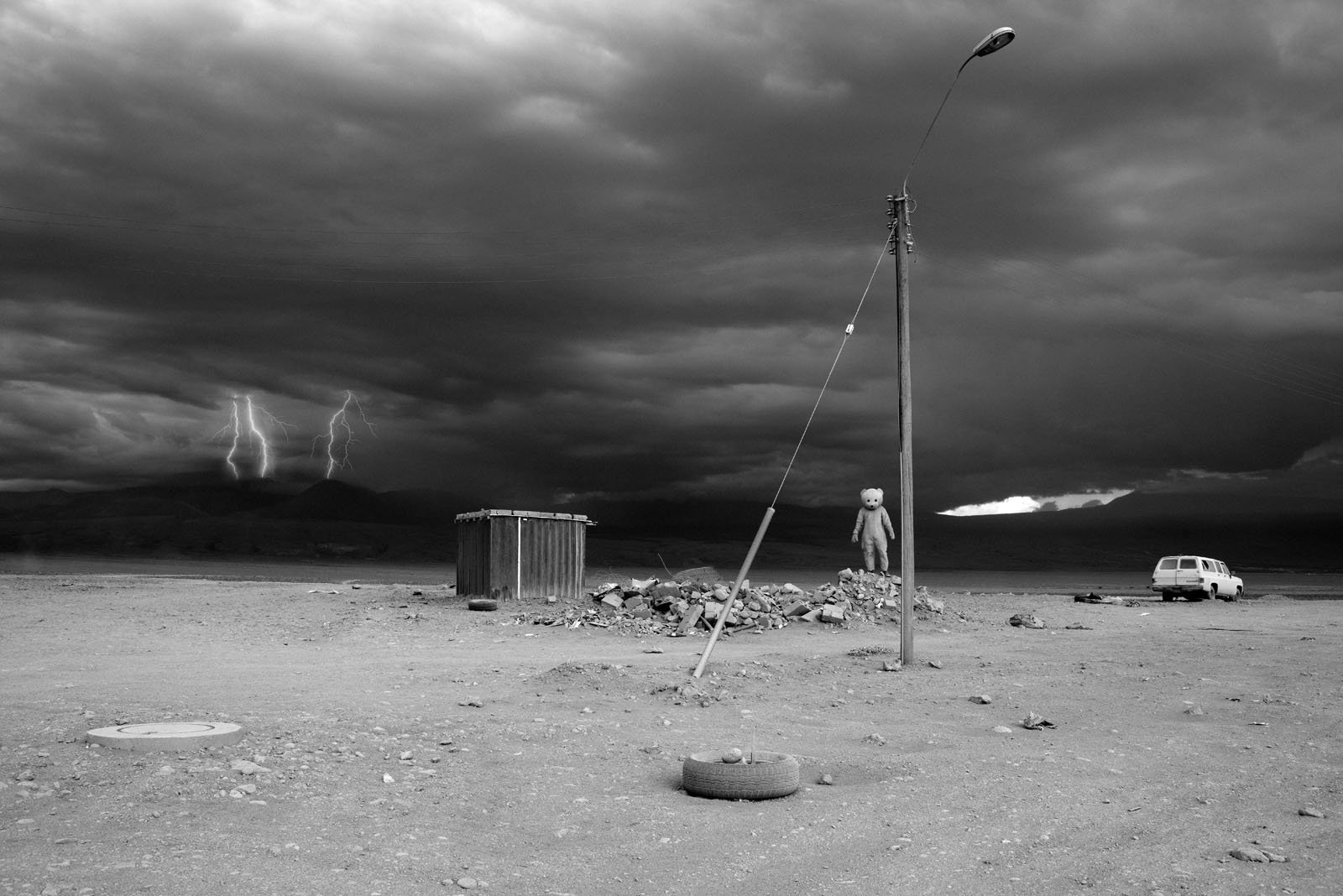
“Creating art is a multifaceted experience, blending moments of joy with challenges and a certain emotional drain. It’s a process that involves laying bare one’s innermost feelings for the world to observe and interpret. While the act of creation itself can be immensely enjoyable, the vulnerability and exposure that accompany it add layers of complexity, making it both a rewarding and demanding journey.”
More of LUAP’s work is available on his website and Instagram.
Image credits: All images © LUAP

